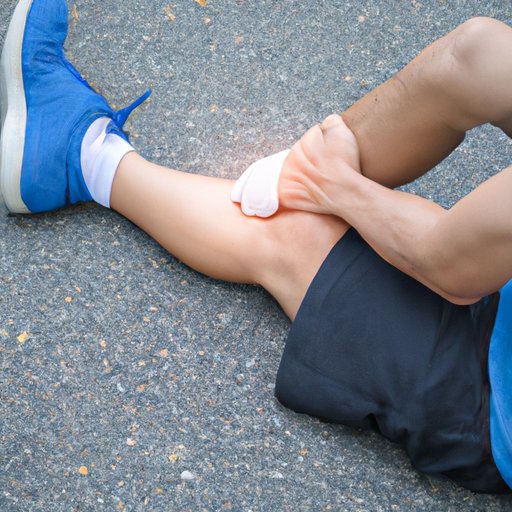Introduction
Sometimes after a good workout, your muscles can feel really sore and tender. This is known as post-workout soreness or delayed onset muscle soreness (DOMS). It usually occurs 12-24 hours after exercise and can last anywhere from 2-7 days. While it can be uncomfortable and inconvenient, it’s actually a sign that you are doing something right in terms of your fitness routine.

Exploring the Science Behind Soreness After Exercise
When you exercise, microscopic tears occur in the muscle fibers. This is why you feel sore afterwards as these tears cause inflammation and discomfort. The body responds by repairing these tears, which leads to an increase in muscle mass and strength. In other words, this soreness is a sign that your body is adapting to the stress of exercise.
Delayed Onset Muscle Soreness (DOMS) is another type of post-workout soreness that is caused by eccentric muscle contractions, which are when the muscle lengthens while under tension. These types of contractions cause greater muscular damage than traditional concentric contractions, where the muscle shortens while under tension. Examples of exercises that involve eccentric contractions include downhill running, plyometric jumps, and squats.
Understanding the Benefits of Post-Workout Soreness
While post-workout soreness can be uncomfortable, it comes with some important benefits. For one, it increases your strength and endurance over time. As your body repairs the microscopic tears in the muscle fibers, they become stronger and more resilient. This means that you can push yourself further in your workouts and get better results.
In addition, post-workout soreness can help improve your mobility and flexibility. By stretching and moving around, you can help reduce the inflammation and tightness in your muscles. This helps to improve range of motion, which is essential for any kind of physical activity.
Debunking Common Myths About Post-Workout Soreness
There are many myths surrounding post-workout soreness, and it’s important to understand the truth behind them. For example, many people believe that you should avoid post-workout soreness altogether. However, research has shown that this isn’t the case and that some degree of soreness is actually beneficial for your body.
Another myth is that post-workout soreness is a sign of injury. While it can be a sign of injury if the soreness is severe and persistent, it is usually just a normal part of the recovery process. Painkillers will not help to cure post-workout soreness either, as they are designed to treat acute pain rather than the long-term effects of exercise.

Strategies to Manage Soreness After a Workout
There are several strategies you can use to manage post-workout soreness. First and foremost, make sure that you are warming up and cooling down properly before and after your workout. This will help to reduce the amount of stress on your body and minimize the potential for soreness.
It’s also important to ensure that you are getting enough rest and recovery between workouts. Your body needs time to repair itself and build back up after each session. Finally, make sure that you are using proper form and technique while exercising. Poor form can lead to increased muscle strain and ultimately more soreness.
The Role of Nutrition in Reducing Post-Workout Soreness
Nutrition plays an important role in reducing post-workout soreness. Macronutrients such as carbohydrates, proteins, and fats are essential for providing your body with the energy it needs to repair and rebuild muscle. Additionally, micronutrients like vitamins and minerals are necessary for supporting muscle health and preventing inflammation.
How to Maximize Performance and Minimize Soreness After Exercise
In order to maximize performance and minimize soreness after exercise, it’s important to use progressive overload. This means gradually increasing the intensity, duration, and frequency of your workouts over time. Doing so ensures that your body is constantly being challenged and adapts accordingly.
You should also consider using periodization training, which splits your training into different phases. This allows you to focus on specific goals and reduce the risk of overtraining and excessive soreness.
Conclusion
Post-workout soreness can be uncomfortable and inconvenient, but it is actually beneficial for your body. It increases strength and endurance, improves mobility and flexibility, and helps the body adapt to the stress of exercise. To minimize soreness, make sure to warm up and cool down properly, get adequate rest and recovery, use proper form and technique, and consume a balanced diet.
Using progressive overload and periodization training can also help to maximize performance and minimize soreness. So don’t be afraid to push yourself and embrace the soreness that comes with it – it’s all part of the journey!
(Note: Is this article not meeting your expectations? Do you have knowledge or insights to share? Unlock new opportunities and expand your reach by joining our authors team. Click Registration to join us and share your expertise with our readers.)
